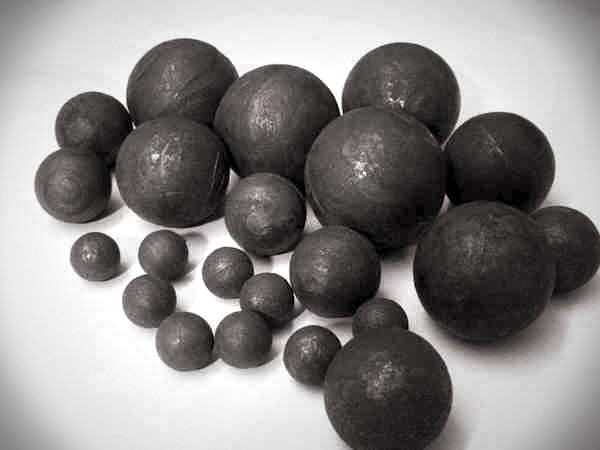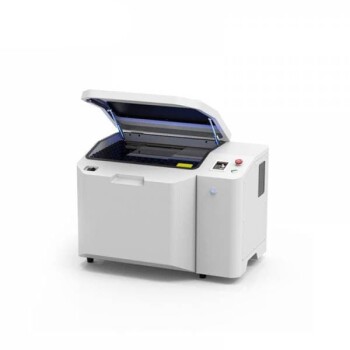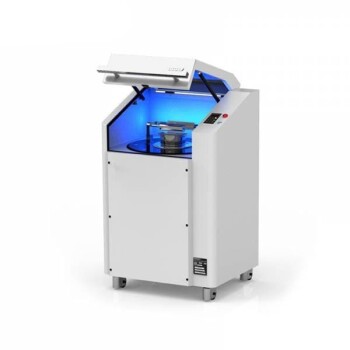Working principle and operation of planetary ball mill
Planetary ball mills are sophisticated laboratory instruments designed to mimic the planetary motion observed in the solar system. This unique design enables the equipment to achieve high-speed grinding and mixing of samples. The grinding jars, positioned on a main wheel disc, rotate and spin, effectively replicating the orbital and rotational movements of celestial bodies.
Users have the flexibility to customize the operation parameters of a planetary ball mill to suit specific process requirements. This includes setting the rotational speed, the duration and sequence of forward and reverse rotations, and the total grinding time. Such adjustments allow for the processing of a wide range of materials and particle sizes, both in dry and wet conditions. The precision grinding capabilities of these mills can produce particles as small as 0.1 microns, making them indispensable tools in materials science and nanotechnology research.
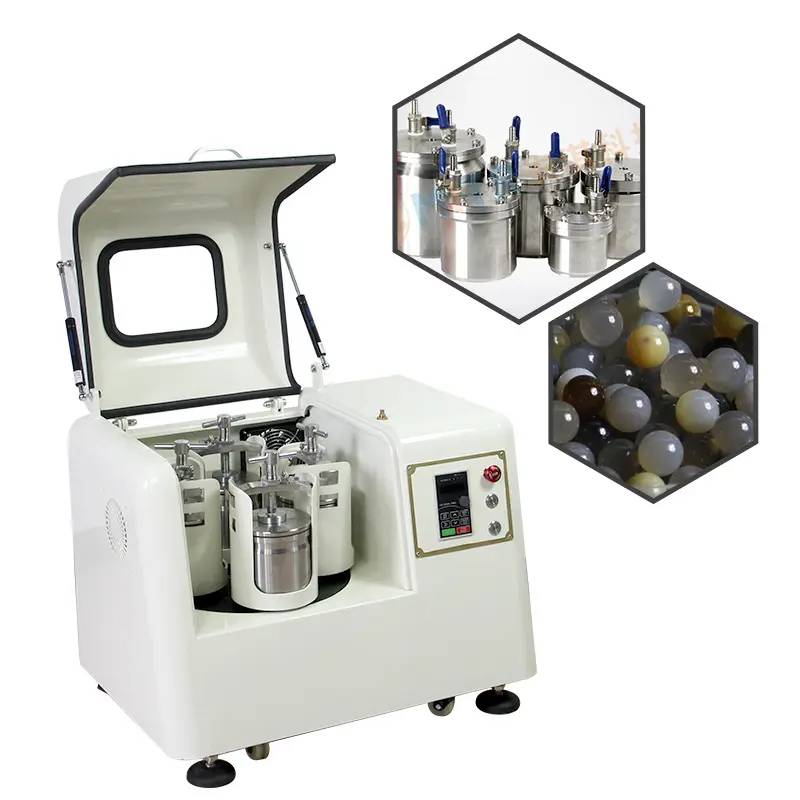
Factors Affecting the Grinding Effect
Planetary ball mills are essential tools in research and industrial settings for achieving efficient mixing and nanoscale grinding. The effectiveness of these mills is influenced by several key factors, each of which plays a critical role in determining the efficiency and quality of the grinding process.
Sample Feed Size: The initial size of the sample material is crucial. Smaller feed sizes generally lead to more efficient grinding as they require less energy to break down into finer particles.
Sample Nature: The physical and chemical properties of the sample, such as hardness, brittleness, and abrasiveness, significantly affect the grinding process. Materials with different properties may require adjustments in milling parameters to optimize grinding.
Grinding Time: The duration of the grinding process directly impacts the fineness of the particles. Longer grinding times can lead to smaller particle sizes but may also increase the risk of contamination or overheating.
Ball to Material Ratio: The ratio of grinding balls to material is vital for efficient energy transfer during the milling process. An optimal ratio ensures that each particle is adequately impacted, enhancing the grinding efficiency.
Grinding Ball Configuration: The type, size, and material of the grinding balls influence the grinding efficiency. Different configurations are suited for different materials and desired particle sizes.
Grinding Method: The choice of grinding method, such as wet or dry grinding, affects the efficiency and the quality of the final product. Each method has its advantages and is selected based on the specific requirements of the material being ground.
Proper operation and configuration of these factors can significantly improve the grinding efficiency and the quality of the samples produced in a planetary ball mill. Understanding and optimizing these parameters is essential for achieving the desired results in various applications.

Advantages and Applications of Planetary Ball Mills
Planetary ball mills are renowned for their advanced features and versatility in various scientific and industrial applications. These mills are equipped with patented oil seal mute technology, ensuring a quieter operation environment, which is crucial for sensitive laboratory settings. The consistency and repeatability of the milling process are exceptional, thanks to the precise engineering of these machines, making them reliable for producing uniform particle sizes and compositions.
The grinding diversity offered by planetary ball mills is another significant advantage. They can handle a wide range of materials, from soft organic compounds to hard ceramics and metals, making them indispensable in fields such as geology, minerals, metallurgy, and electronics. The adjustable speed feature allows for fine-tuning the milling process to suit specific material properties and desired outcomes, enhancing the flexibility of these mills.
Moreover, the power failure memory function is a valuable safety and convenience feature. In the event of a power outage, the mill can resume operation from where it left off, preventing any loss of processing time or material. This feature is particularly beneficial in long grinding processes where consistency is critical.
Planetary ball mills are widely used across various sectors including building materials, ceramics, chemical industry, light industry, medicine, cosmetology, and environmental protection. Their ability to efficiently mix and grind materials down to nanoscale sizes makes them a preferred choice for research and development in these fields.
Planetary Ball Mill Selection and Accessories
Planetary ball mills are versatile tools used in research and industry for efficient mixing and nanoscale grinding. Depending on the specific application requirements, a variety of models and accessories are available to enhance their functionality and adaptability. Key types include vertical planetary ball mills, omni-directional planetary ball mills, liquid nitrogen type planetary ball mills, and circulating air-conditioning cooled planetary ball mills. Each model is equipped with specific accessories designed to optimize performance in particular application scenarios, ensuring that researchers can achieve precise and effective results tailored to their needs.
Selection of Grinding Jars and Balls
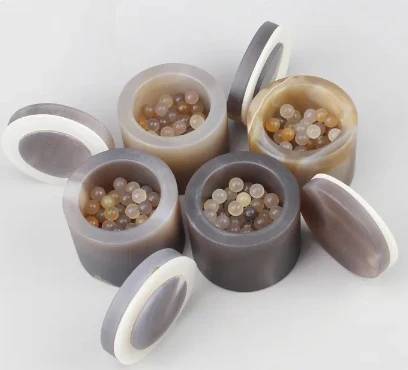
In the realm of material science and nanotechnology, the selection of appropriate grinding jars and balls in planetary ball mills is crucial for achieving efficient mixing and nanoscale grinding. The choice of materials for these components, such as stainless steel, carbide, polyurethane, and PTFE, significantly impacts the grinding efficiency and the quality of the final sample.
Stainless Steel Jars and Balls are robust and suitable for general applications, offering high durability and resistance to wear. They are ideal for grinding hard materials and can withstand high rotational speeds, making them a popular choice for many laboratories.
Carbide Jars and Balls provide superior hardness and are particularly effective for grinding very hard and abrasive materials. Their high density and hardness ensure efficient grinding and minimal wear over time.
Polyurethane Jars are softer and more flexible, making them suitable for delicate materials or when a lower impact grinding is required. They are often used in applications where contamination from the grinding medium must be minimized.
PTFE Jars and Balls are highly inert and chemically resistant, making them ideal for grinding samples that are sensitive to contamination or require a chemically inert environment. They are also suitable for low-temperature grinding processes.
Choosing the right combination of grinding jars and balls based on the nature of the sample and the specific grinding requirements can significantly enhance the efficiency of the grinding process and the quality of the ground material. This careful selection is essential for achieving the desired particle size and consistency in nanoscale grinding applications.
Grinding Examples and Results
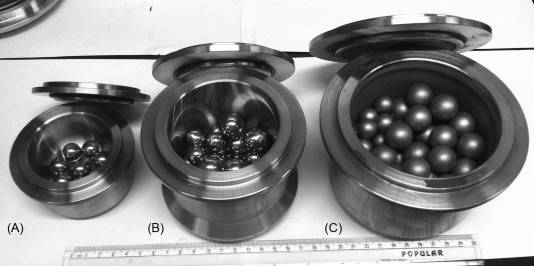
Planetary ball mills are versatile tools that can handle a wide range of materials and grinding conditions, making them essential for research in material science and nanotechnology. This section explores specific grinding examples to illustrate the effects of different materials and grinding conditions.
Grinding with Large Glass Particles
When grinding large glass particles, planetary ball mills demonstrate their capability to reduce particle size effectively. The high energy input from the milling process leads to a significant decrease in particle size, which is crucial for applications requiring fine glass powders. The grinding efficiency is influenced by the rotational speed of the mill and the duration of the grinding process.
Silica Powder Grinding
Silica powder, known for its abrasive properties, presents a challenge in grinding. Planetary ball mills are equipped to handle such materials, ensuring minimal contamination and maintaining the purity of the silica powder. The grinding results in a more uniform particle size distribution, which is beneficial for applications in ceramics and refractories.
Zirconium Oxide Grinding
Zirconium oxide, a material with high strength and toughness, requires a robust grinding process. Planetary ball mills are capable of achieving the desired nanoscale particle size, which is essential for enhancing the mechanical properties of zirconium oxide in various applications, including dental and medical implants.
Polyurethane Particle Grinding
Polyurethane particles, used in a variety of industries including automotive and footwear, benefit from the precise grinding capabilities of planetary ball mills. The milling process not only reduces the particle size but also improves the dispersion of the particles, leading to better material properties and performance.
In conclusion, planetary ball mills are indispensable research tools for achieving efficient mixing and nanoscale grinding across a diverse range of materials. The examples provided demonstrate the versatility and effectiveness of these mills in various grinding applications.
Related Products
- Laboratory Planetary Ball Mill Cabinet Planetary Ball Milling Machine
- High Energy Planetary Ball Mill Milling Machine for Laboratory
- Laboratory Planetary Ball Mill Rotating Ball Milling Machine
- Mini Planetary Ball Mill Machine for Laboratory Milling
- High-Energy Omnidirectional Planetary Ball Mill Machine for Laboratory
Related Articles
- Disc / Cup Vibratory Mill: A Comprehensive Guide to Its Functions and Applications
- What is a Laboratory Crusher Used For?
- Features of Different Laboratory Mills: An Overview
- Laboratory Crushers: A Comprehensive Guide to Their Uses and Functionality
- Disc / Cup Vibratory Mill: A Comprehensive Guide for Laboratory Experts
